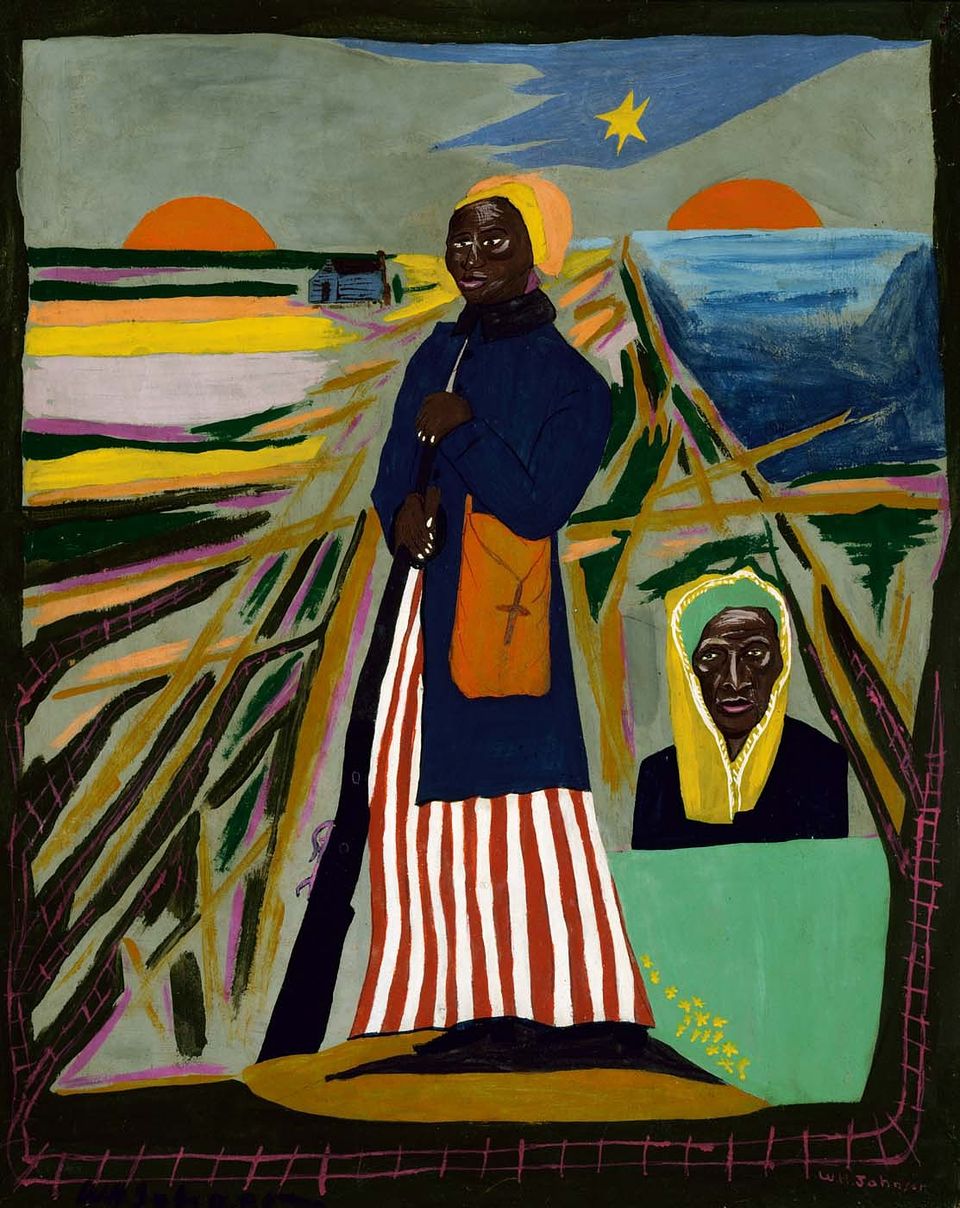Artwork Details
- Title
- Toussaint l’Ouverture, Haiti
- Artist
- Date
- ca. 1945
- Location
- Not on view
- Dimensions
- 38 1⁄4 x 30 1⁄8 in. (97.2 x 76.4 cm.)
- Credit Line
- Gift of the Harmon Foundation
- Mediums
- Mediums Description
- oil on paperboard
- Classifications
- Subjects
- Dress — uniform — military uniform
- Haitian
- Portrait male — L’Ouverture, Toussaint
- History — Haiti
- Object Number
- 1967.59.1154
Artwork Description
Johnson presented Haitian revolutionary leader Toussaint l'Ouverture (1743--1803) as both statesman and general. Wearing an elegant uniform, he carries a sword and holds official papers. As an early martyr in the fight against slavery across the Americas, l'Ouverture has long been a lodestar for those fighting for independence against oppression.
Johnson marked important moments in l'Ouverture's rise to power, from his involvement in the 1791 Haitian slave rebellion in which white landowners were slain, to his emergence as a skilled soldier and leader of troops. Three years later, when France granted citizenship rights and freedom to Haitian Blacks, the politically powerful l'Ouverture took over as governor. He drew up a constitution (the papers in his right hand) that abolished slavery. For the next seven years the former slave governed as though Haiti were no longer a French colony. His independence provoked the ire of Napoleon Bonaparte, who sent troops to capture the upstart governor and reinstate slavery. L'Ouverture died in a French prison, but one of his generals continued the fight against French occupation and led the country to independence in 1802. Johnson celebrated l'Ouverture, and by extension the Republic of Haiti, which became the first country in the Americas to outlaw slavery and the second (after the United States) to declare itself free of colonial rule.














